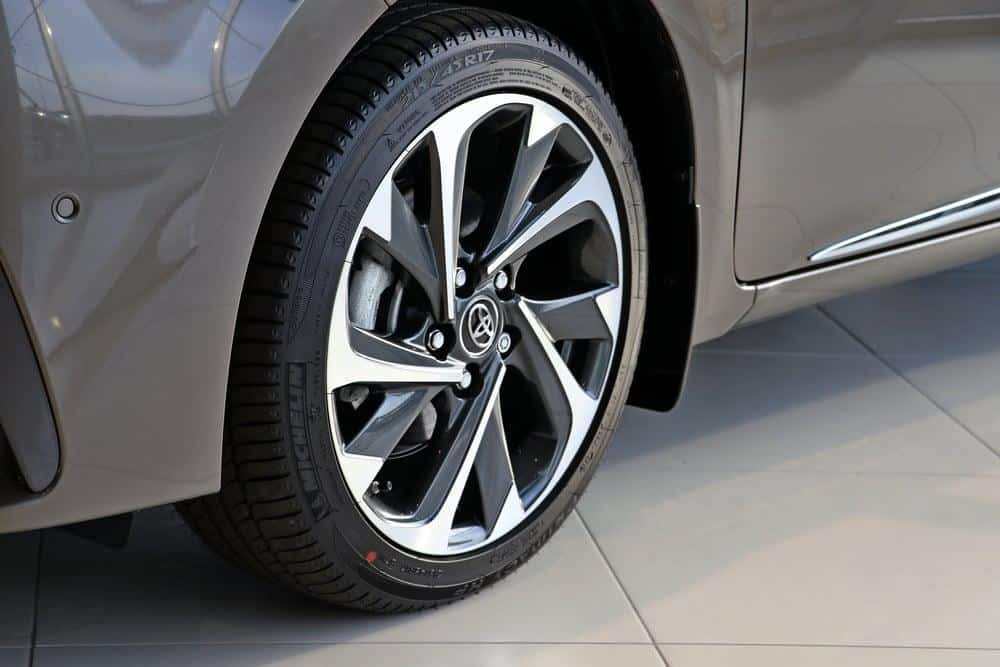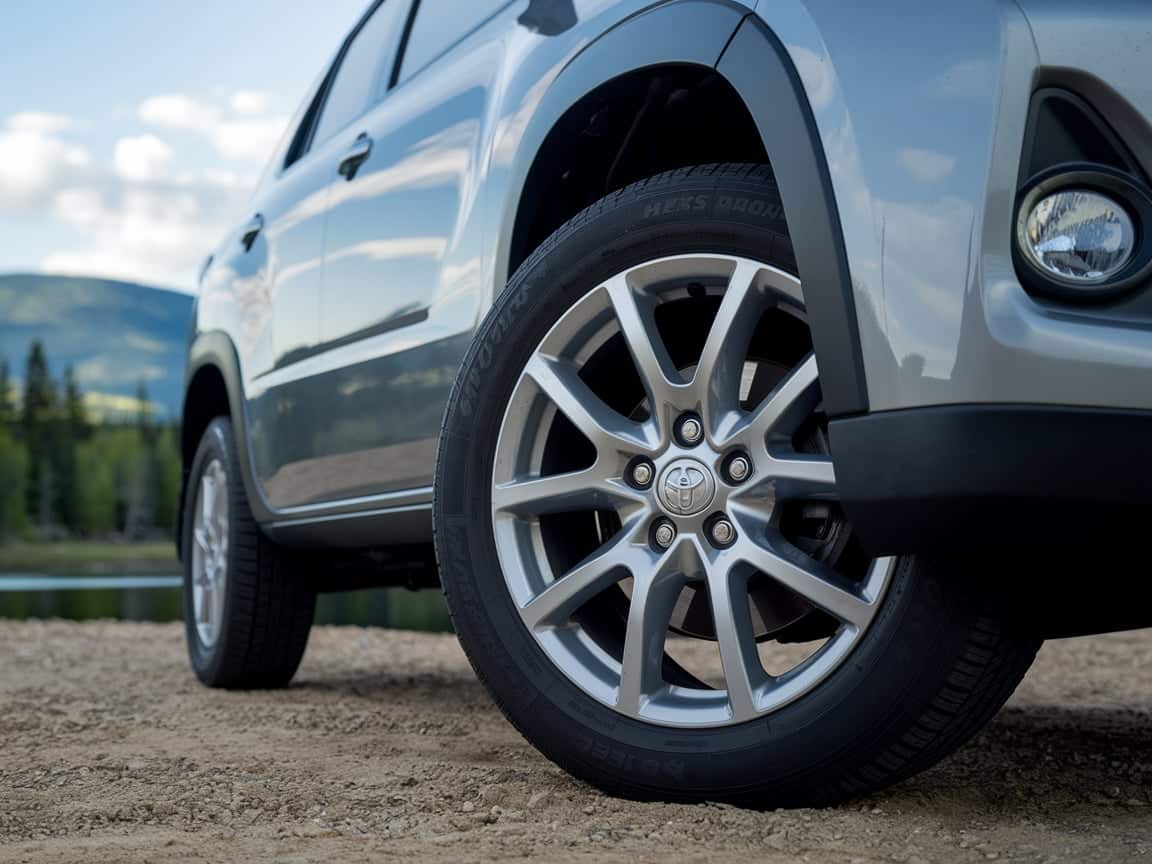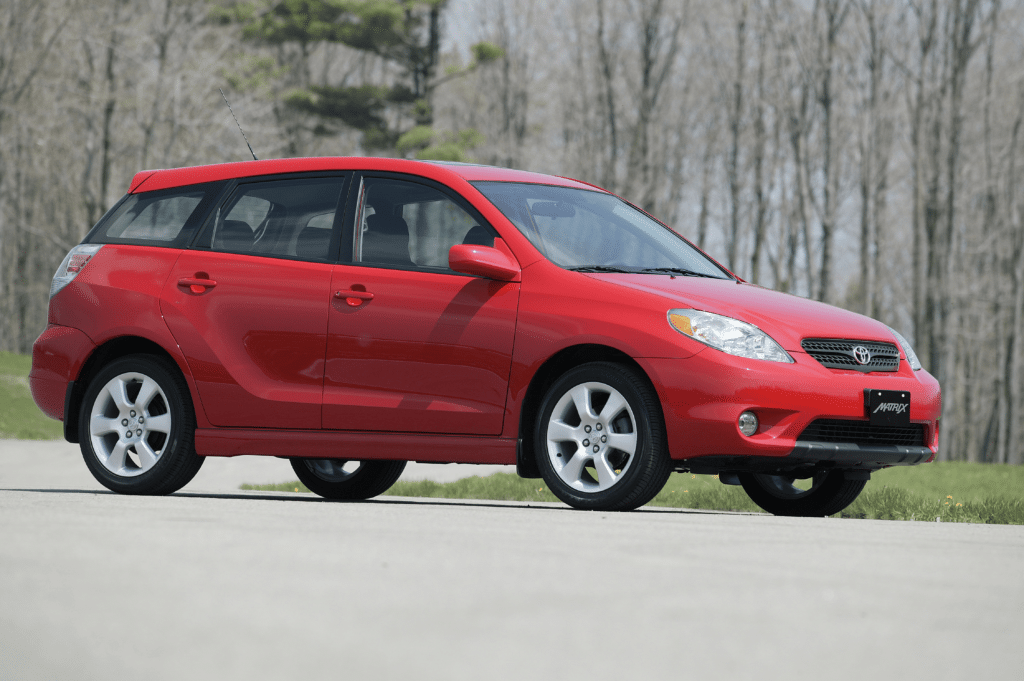Your car’s bolt pattern plays a key role in wheel fitting – especially for Toyota Matrix owners.
This measurement tells you which wheels work with your car. Many Matrix drivers feel unsure when picking new wheels because they don’t know their bolt pattern details.
The Toyota Matrix uses two main bolt patterns, a 5x100mm, and a 5×114.3mm setup.
The first number (5) shows how many lug nuts hold your wheel, while the second number tells you the diameter of the circle they form.
Getting this right matters because the wrong pattern means your new wheels won’t fit.
I’ve learned that ensuring the right pattern is essential, so let’s break down these numbers and make sure you choose wheels that fit your Matrix perfectly.
What is the Bolt Pattern for a Toyota Matrix

The Toyota Matrix comes with two distinct bolt patterns, making the wheel selection more specific.
If you own an L or base model, your car has a 5x100mm pattern. This means five lug nuts form a circle measuring 100mm across.
But if you drive an S or XRS model, you’ll find a slightly different setup – a 5×114.3mm pattern, where those five lug nuts create a wider circle.
Figuring out which pattern you have is pretty straightforward. You can count the lug nuts (you’ll always find five), measure between opposite lugs, or check your center bore size.
A 54.1mm center bore tells you it’s the 5×100 pattern, while a 60.1mm center bore means you’ve got the 5×114.3 pattern.
The easiest way?
Just look at your trim level badge. L and base models use the smaller pattern, while S and XRS use the larger one.
This might seem like a small detail, but it makes all the difference when shopping for new wheels – they must match your pattern exactly.
Toyota Matrix Bolt Patterns & Their Compatibility

If you want to buy new wheels for your Toyota Matrix, understanding bolt patterns is your first step. They’re like a fingerprint for your car’s wheels, and getting them right makes all the difference.
The Toyota Matrix uses two main bolt patterns, depending on your model. Base and L models feature a 5x100mm pattern, while S and XRS models come with a 5×114.3mm setup.
The first number (5) tells you how many lug nuts you have, and the second number shows the circle’s diameter they form.
For example, with the 5x100mm pattern (Base & L Models), it works with many compact Toyota and Subaru models.
I’ve personally seen it fit well on other Toyotas, with a center bore size of 54.1mm and common tire sizes like 205/55R16 and 215/45R17. The offset range is typically 37-47mm.
For the 5×114.3mm pattern (S & XRS Models), it matches several mid-size Toyota vehicles and has a center bore size of 60.1mm. I’ve noticed this setup also works well with tire sizes like 205/55R16, 215/45R17, and 215/45ZR18, with the same offset range of 37-47mm.
Quick Tips for Wheel Shopping:
- Check your trim level first – it’s the fastest way to know your pattern.
- Measure your center bore – it confirms your bolt pattern.
- Look at your current wheels’ markings.
- Consider wheel offset with your bolt pattern.
Remember, you can’t mix and match these patterns. A wheel made for one pattern won’t fit the other, no matter how close they seem. When shopping for wheels, I always make sure to match the exact pattern to avoid any fitting issues.
List of the Correct Bolt Patterns for a Different Toyota Matrix
| Category | Model/Trim | Bolt Pattern | Center Bore | Notes |
|---|---|---|---|---|
| First Generation (2003-2008) | Base Model | 5x100mm | 54.1mm | Common bolt pattern across all first-gen trims |
| XR | 5x100mm | 54.1mm | ||
| XRS | 5x100mm | 54.1mm | ||
| Second Generation (2009-2014) | Base/L Model | 5x100mm | 54.1mm | Cannot use S/XRS wheels due to bolt pattern mismatch |
| S Model | 5×114.3mm | 60.1mm | Compatible only with the same trim-level wheels | |
| XRS Model | 5×114.3mm | 60.1mm | ||
| Common Specifications | Lug Nut Size | M12 x 1.5 | – | The standard for all models |
| Wheel Offset Range | 37-47mm | – | ||
| Standard Wheel Sizes | 16″, 17″, 18″ | – | ||
| Standard Bolt Type | Lug nuts | – | Not studs |
How to Identify the Correct Bolt Pattern for a Specific Toyota Matrix Model

Finding your Toyota Matrix’s bolt pattern doesn’t need to be tricky. Here are the simplest ways to check:
Check Your Trim Level
- Look at your back badge
- Open your driver’s door and check the sticker
- Check your registration papers
Visual Inspection Method
- Count your lug nuts (all Matrix models have 5)
- Look at your center cap size
- Check for any markings on your current wheels
- Notice if you have alloy or steel wheels
Physical Measurement
- Measure between opposite lug nut centers
- Check your center bore size
- 54.1mm means 5×100 pattern
- 60.1mm means 5×114.3 pattern
Model-Based Guide (2003-2008 Models)
- All trims use a 5x100mm pattern
2009-2014 Models
- Base and L trims: 5x100mm
- S and XRS trims: 5×114.3mm
Online Resources
- Use your VIN number
- Check factory specs
- Look up wheel specs by model year
Comparisons Between Toyota Matrix & Other Brands’ Bolt Patterns with Prices
| Toyota Matrix (2009-2014) | Base/L | 5x100mm | $100–$280 |
| S/XRS | 5×114.3mm | $225–$280 | |
| Compatible Vehicle Patterns | |||
| 5x100mm Pattern Matches | Subaru Impreza | 5x100mm | $150–$300 |
| Volkswagen Golf | 5x100mm | $180–$350 | |
| Toyota Corolla (pre-2014) | 5x100mm | $120–$250 | |
| 5×114.3mm Pattern Matches | Honda Civic | 5×114.3mm | $140–$300 |
| Mazda 3 | 5×114.3mm | $160–$320 | |
| Nissan Sentra | 5×114.3mm | $130–$280 |
Remember: A matching bolt pattern doesn’t guarantee fit. Check all specs before buying. Getting it right the first time saves money and hassle.
How to Maintain Bold Patterns on Your Toyota Matrix

Taking care of your Matrix’s bolt pattern isn’t complicated, but it greatly affects how well your wheels work.
Let’s talk about some simple ways to keep everything in good shape.
Regular Checks and Cleaning
- Clean lug nuts and bolt holes every few months
- Look for rust or damage around mounting areas
- Check for loose lug nuts once a month
- Keep your spare wheel’s mounting area clean, too
Smart Maintenance Steps
- Use the right torque when tightening lug nuts
- Clean threads before putting wheels back on
- Don’t over-tighten – it can damage threads
- Keep spare lug nuts handy, just in case
Watch Out For
- Rust building up around lug nuts
- Cross-threading when installing wheels
- Uneven wear patterns
- Missing or damaged lug nuts
Tips for Wheel Changes
- Follow the star pattern when tightening
- Clean mounting surfaces before installing
- Don’t use power tools for final tightening
- Recheck torque after 50 miles of driving
Seasonal Care
- Extra cleaning in winter helps prevent rust
- Check more often if you drive on salted roads
- Clean thoroughly when switching seasonal tires
- Apply anti-seize on threads (but not too much)
These simple steps keep your wheels secure and make future changes easier. Plus, good maintenance helps avoid costly repairs down the road.
Conclusion
Whether you’re buying new wheels or just taking care of your current ones, knowing these basics helps you make smart choices and keeps your car running safely.
Remember, Base and L models use the 5x100mm pattern, while S and XRS models need the 5×114.3mm setup.
I always make sure to keep those lug nuts properly torqued, maintain clean mounting surfaces, and check them regularly. A little attention goes a long way.
Need new wheels?
Just match your pattern, check the center bore size, and you’re good to go. It’s that simple.
Happy driving!


